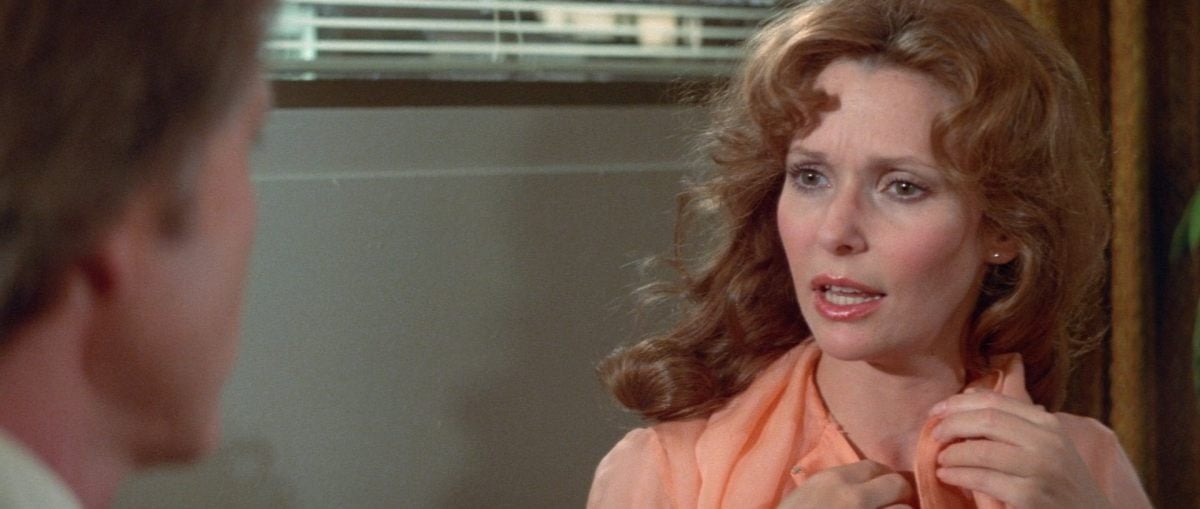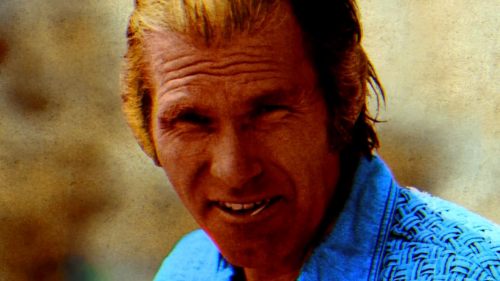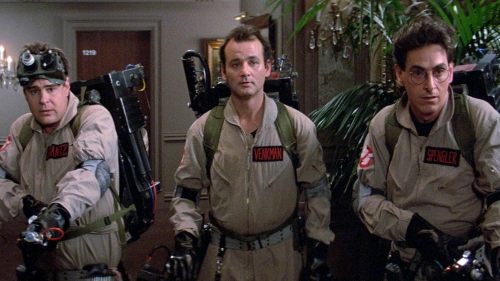Collins’ Crypt: THE MANITOU Movie Was Faithful To Its Insane Source
It was twelve years ago that The Manitou first entered my life. My friend was moderating a Q&A with co-star Stella Stevens at a midnight screening at the Vista here in LA, and I went to be supportive even though I'd never heard of the film. Two hours later I realized it was one of the six or seven good decisions I had ever made - it was such a bonkers movie, perfect for a midnight viewing, and one of those things that are perfectly suited to my own idiosyncrasies. But alas, I think I only found time to see the movie one or two more times over the years since, to the point where my memory of it was largely fading - I could remember the broad strokes, of course, but not what supporting characters looked like or who ended up surviving its insane story.
So when Scream Factory announced they had acquired the film for their ever-expanding library, I was ecstatic, because it would give me a perfect opportunity to revisit the film and see if it held up to my memories (which would really suck if it didn't, since it was one of the films I recommended in my book), not to mention replace the junky DVD that I probably overpaid for since it's been long out of print. Additionally, it would give me an excuse to finally read the original novel by Graham Masterton, which I picked up a year ago as part of my haul at an annual book sale and dubbed it "the one I'm most excited to check out", and then of course never actually got around to doing that (in fact, I started reading a few days after THIS year's installment of the sale). Did the movie's insanity come straight from the source, or could we chalk up the indescribably batshit climax to the imagination of director William Girdler?
As it turns out, Girdler was actually staying pretty close to the novel's jaw-dropping lunacy - it's a remarkably faithful adaptation in most aspects. For those uninitiated, The Manitou is the story of Karen Tandy (played by Susan Strasberg in the 1978 film), who has what appears to be a tumor growing on her neck, albeit one that is growing much more rapidly than the doctors would expect, and also seems to twitch or "move" on its own from time to time. Attempts to remove it result in Final Destination-esque accidents, and it keeps growing larger and larger all the while. Meanwhile, fake psychic Harry Erskine is happily taking money from old ladies to read fortunes when he is informed of Ms. Tandy's predicament, as she believes there is something supernatural happening and that he might be able to help. Harry (brought to life by Tony Curtis) is skeptical at first, of course, but sooner or later has no choice but to believe that this is no ordinary medical condition, and sets about rounding up other occult experts as well as a Native American medicine man named Singing Rock who can remove the tumor and save Karen's life.

Beat for beat, the book and movie are pretty much the same - while there are some omissions, there's almost nothing about the plot that didn't come directly from Masterton's novel (published in 1975 and discovered by Girdler in an airport). The only significant change to the narrative - besides swapping the novel's New York City for the film's San Fransisco setting - is that the book's characters are all much younger than they are in the film, which is unusual but actually pays off with regards to the relationship between Karen and Harry. In the book, Karen is 21 years old and hears about Harry (who is in his early 30s) through her aunt, who is one of his usual clients - the two have never met. But despite their lack of history together, Harry still drops everything to help her, which is a bit hard to buy - why is he so invested? If it's a simple case of being attracted to her, it doesn't quite land, especially since Karen is basically in a coma for the bulk of the story.
In the film, however, Karen was played by the 40ish Susan Strasberg and Harry (Tony Curtis, around 52 at the time) was her ex-boyfriend, who she seeks out when it appears that his type might be more helpful than the usual doctors. So when she re-opens those lines of communication, it's kind of sweet - we see these two middle-aged people rekindling their love, with Harry giving her some morale boosting before her surgery so she knows she's not going through it alone - it comes off as a romantic melodrama more than anything else. The rest of the plot proceeds the same as the novel, but without the audience ever wondering why Harry is bothering - it makes total sense here, and therefore it was a smart decision to go off-book. As for John Singing Rock, the medicine man who aids Harry, I think I prefer the book's description, where he looks more like an accountant than a "man of nature", which is exactly how he appears in the film - but I liked that the movie version helps out in exchange for a donation to their education charity, whereas in the book he does it to put thirty grand in his pocket. So that change kind of evens out.
Every other difference is, as mentioned, more of an omission. The novel has a detective named Marino who is introduced after one of Harry's clients acts bizarrely during their usual tarot reading session and falls to their death while in a trance, a scene that still occurs in the film but has no police followup of note. In the book, Marino keeps popping up, not really believing Harry to be the culprit behind these strange occurrences but also puzzled as to why they seem to all involve him. He plays a major part in the climax, as well, ignoring Harry's warnings about trying to fight the spirit (named Misquamacus, now fully grown and "born" from Karen's tumor) with guns only to see most of his men killed as a result. The character doesn't appear in the film at all, and his skeptical role is mostly given to Karen's doctor, Hughes, who is more of an ally to Harry in the novel than the antagonist he often comes across as here. In turn - spoiler ahead - perhaps to make up for the lack of on-screen carnage as a result of dropping the police, Girdler kills Hughes off in spectacular fashion, whereas he survives the novel.

The book's backstory is largely dropped as well. While in the film Misquamacus has no clear motive or origin, in the book we learn that he is specifically seeking revenge on the white man for stealing Manhattan (!) from the Native Americans centuries ago. Indeed, race issues come up on several occasions in Masterton's text, some of it not exactly "woke" (keep in mind it was the '70s) but the film drops them entirely, probably to save money and simplify the already nutty plot. Plus it's a bit goofy; Karen dreams of a ship in the book, and Harry encourages her to write down the details and draw the ship and its flag so he can research it, and shockingly this actually works - he finds the flag by going to the library and looking through the ship books.
The film also doesn't have the cojones to reference The Exorcist directly, which Masterton does at least twice in the novel, somewhat reverential but also to inform the audience that THIS battle is much more intense. It's obvious that the book and film owe their existence to both William Peter Blatty's novel and William Friedkin's subsequent film, but Girdler (who had already been down that road with Abby) opted not to retain Masterton's overt nods to the story. But Pazuzu's shadow looms over the film anyway; both films start off without much in the way of scares or suspense, letting the audience get to know their heroes before the supernatural elements take hold. And Karen's hospital room functions in the same way as Regan's bedroom - the protagonists will enter when necessary, retreat and regroup, then gear up to try again. Plus, of course, both films revolve around a sick girl who the doctors can't help, allowing men of faith to take over and save the day.
As for the ending... well, I won't spoil things here, but suffice to say that they differ, with the common thread being that they're totally ridiculous. The book's ending relies heavily on Detective Marino and his resources (particularly a large computer), so it's obvious that it had to be changed when the character was excised - allowing Girdler to throw in some Star Wars alongside the Exorcist stuff (in fact, one of the film's few moments not taken from the book is when a laser goes out of control, another hint he may have been trying to cash in on two trends for the price of one). According to the commentary track by historian Troy Howarth, Girdler and his co-writers wrote the script in three days, so I guess we can be thankful that they made any changes at all, not to mention made sure to smooth over any plot discrepancies that might have sprung up from dropping things out when remaining so faithful otherwise. As adaptations go, regardless of how you feel about the quality of the story, The Manitou is one of the more faithful I've come across recently, and I hope this new Blu-ray release introduces people not only to the film, but also the book series - yes, Masterton has written several followups. Exorcist got a bunch of movie sequels - I think it's time for The Manitou to continue following in its footsteps!



